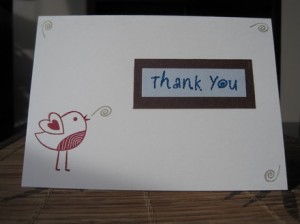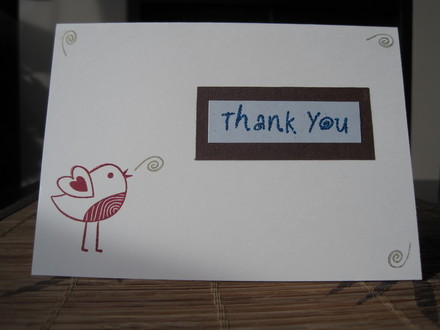
HALIFAX (CUP) — I have vivid memories of my mother making very detailed lists on Christmas morning of who got what from whom. She would then pass the lists out to my sister and I with a cheery, “Remember to write your thank-you cards as soon as possible!”
But much to my mother’s chagrin, we never managed to write a single thank-you note. We would think about it, maybe even start one, but never follow it through to completion.
Recently, I received a bursary. Having gone through this process before, I know proper etiquette rules state that I should respond promptly with a short but well thought-out thank-you note. When I inquired at the financial aid office about what address to send the note to, I was met with some surprised looks.
What happened to the fine art of writing thank-you notes? I know they still sell thank-you cards in the greeting card aisle, but when was the last time anyone bought one and actually used it for its intended purpose?
Up until the 1960s, etiquette was a required subject taught in most schools across North America and Britain. These classes would teach children, in both elementary and high school levels of study, how to properly kneel at the altar, which fork was for what and how to write proper letters. Children learned that the timing of a thank-you note was the difference between merely following etiquette rules and having a high degree of class.
But our society just isn’t that formal anymore.
Social graces today reflect our digital identities. There are, for example, unwritten social rules about when it is and when is not appropriate to friend someone on Facebook. But when it comes to formally saying thank you, very few people know the rules about when or how to say it.
According to etiquette specialists, a thank-you note is absolutely required for the following major life events: bridal shower or baby shower gifts; holiday, birthday, Bar/Bat mitzvah, graduation and housewarming gifts; and sympathy letters, flowers, mass cards or donations made in the deceased’s name.
A formal thank-you note should not be 140 characters or less, and should be done by hand. Letters in your own handwriting are personal; they show you are genuinely grateful for something. Online communication lacks a human quality, even if you use every emoticon you can find. When you are really thankful, an email or (God forbid) a tweet just won’t cut it.
I dare you to sit down and write a thank-you card to someone who has recently done or said something that meant a lot to you. Take the time to pick up a pen, dig out some stationery and pay for the postage stamp.
http://cupwire.ca/articles/52231




